Products
Products
Triple-quadrupole ICP-MS system
The model 8800 ICP-QQQ triple-quadrupole ICP-MS system from Agilent Technologies is designed to provide superior performance, sensitivity, and flexibility compared with single-quadrupole ICP-MS systems. According to the company, the system's ORS3 collision–reaction cell provides precise control of reaction processes for MS-MS operation. The system is intended for use in semiconductor manufacturing, advanced materials analysis, clinical and life-science research, and other applications in which interferences can hamper measurements with single-quadrupole ICP-MS. Agilent Technologies, Santa Clara, CA;
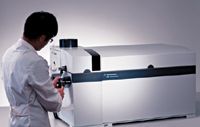
Hierarchical modeling software
The Unscrambler X hierarchical model development module and the Unscrambler X hierarchical model engine from CAMO Software are designed for R&D, production, engineering, and QA–QC environments that require developing and implementing run-time control models for process monitoring application. According to the company, they are suitable for use by production supervisors, quality assurance teams, technical services, and control system designers. CAMO Software, Woodbridge, NJ;

Digital multichannel analyzer
Amptek's MCA8000D compact digital multichannel analyzer is designed to digitize an input signal to measure the pulse height and obtain the pulse height spectrum. Free display and acquisition software and a free software development kit are included. Amptek Inc., Bedford, MA;
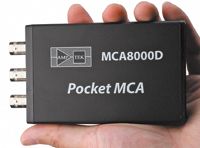
Confocal Raman microscope
Horiba Scientific's XploRA One Raman microscope is designed for QA–QC and analytical laboratories in the industrial and routine analytical sectors. According to the company, the microscope's user interface is powered by its LabSpec 6 software. Horiba Scientific, Edison, NJ;
www.horiba.com/us/en/scientific/marketing-us/xplora-one/
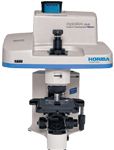
Miniature spectrometer
The ULSi, an integrated miniature spectrometer from Avantes, is designed with one housing that includes the company's optimum Ultra Low Straylight optical bench and a miniaturized version of its AS5216 electronics board. According to the company, the spectrometer is available with either the Sony ILX554B, the Sony ILX511, or the Toshiba TCD1304 spectrometer. Avantes, Bloomfield, CO;
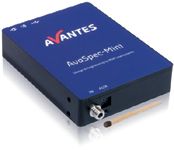
Portable Raman system
The i-Raman EX 1064-nm portable Raman spectrometer from B&W Tek is designed as an extension of the company's i-Raman portable spectrometer. According to the company, the system is equipped with a high-sensitivity inGaAs array detector with deep TE cooling and a high dynamic range. B&W Tek, Newark, DE;
www.bwtek.com/products/i-raman-ex/

Redesigned website
LECO corporation has a redesigned website intended to help customers easily find products, application notes, and other resources related to their market areas of interest, such as food, life sciences, energy and fuels, mined materials and metals, environment, and agriculture. According to the company, new content is added frequently. LECO Corporation, St. Joseph, MI;
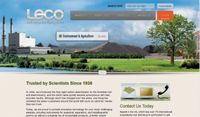
FT-NIR spectrometer
The Tango T FT-NIR spectrometer from Bruker Optics is designed for use in the QC laboratory. According to the company, the spectrometer comes equipped with an active sample heater–cooler for sample temperatures between 20 °C and 80 °C and is suitable for analyses in material identification and quantification in the food, pharmaceutical, and chemical industries. Bruker Optics, Billerica, MA;
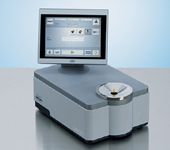
UV–vis–NIR analyzers
The Proflux UVD260 and UVD240 analyzers from Moxtek are designed to improve UV–vis–NIR spectrophotometer performance. According to the company, the analyzers conserve space, allow a wide cone acceptance angle, cover the wavelength range from 240 nm to 3.3 μm, and have no infrared leakage issues. Moxtek, Orem, UT;

Certified reference materials
SPEX CertiPrep's certified reference materials for speciation analysis are designed to cover areas that include environmental protection, food, and drugs. According to the company, the materials are offered as inorganic single-element speciation standards that include As3+, As5+, Cr3+, Cr6+, Se4+, and Se6+ analyzed by LC–ICP-MS. SPEX CertiPrep, Metuchen, NJ;

Digital signal processor
The FalconX digital signal processor from XIA employs the SItoro algorithms from Southern Innovation. According to the company, the processor can operate at 1 Mcps with 12% dead-time. Applications include high-rate synchrotron X-ray analyses such as XAFS and high-rate XRF. XIA, Hayward, CA;

Webcast: USP-regulated methods
A webcast presented by Milestone and Agilent on ICP-MS analysis reportedly offers information on how to be prepared for new USP-regulated methods. According to the company pharmaceutical sample will require analysis for four trace metals (As, Ca, Hg, and Pb). Milestone, Shelton, CT;
www.milestonesci.com/usp-webcast

FT–IR autosampler–microplate reader
PIKE Technologies' X, Y autosampler–microplate reader is designed for use with FT-IR spectrometers. According to the company, the accessory is designed around 24-, 48-, or 96-well microplate configurations and is suitable for high-throughput sample analysis of liquid residues, solids, and powered samples. PIKE Technologies, Madison, WI;
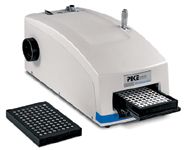
NMR spectrometer
The Thermo Scientific picoSpin 45 Proton NMR spectrometer is designed as a benchtop device that processes liquid samples as small as 30 μL. According to the company, the spectrometer weighs less than 5 kg, can be shared by multiple laboratories, and has a fluid capillary cartridge that allows liquids to be injected without the need to use NMR tubes. Thermo Fisher Scientific, San Jose, CA;
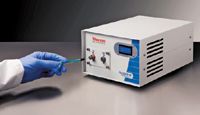
1064-nm NIR Raman spectrometers
Portable Raman spectrometers from StellarNet are designed to use InGaAs detectors to capture NIR spectra induced by 1064-nm lasers. According to the company, the high-resolution model (Raman-HR-TEC-IG) achieves 8 cm-1 resolution with a 1024-element PDA detector, and the standard resolution instrument achieves 16 cm-1 resolution and has a 512-element PDA detector. StellarNet Inc., Tampa, FL;
www.stellarnet.us/PopularConfigurations_ramansystems.htm
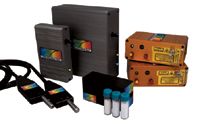
UV–vis spectrophotometers
Shimadzu's compact UV-2600 and UV-2700 UV–vis spectrophotometers are designed to reduce stray light during routine analysis and demanding research applications. According to the company, the latter instrument achieves stray light of 0.00005 %T at 220 nm, and its photometric performance range has been expanded to 8 Abs, with a transmittance value of 0.000001%. The former instrument reportedly features a measurement wavelength range to 1400 nm. Shimadzu Scientific Instruments, Columbia, MD;
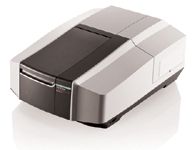
Mercury analyzers
The Hydra II mercury analyzers from Teledyne Leeman Labs are designed to provide configuration flexibility. According to the company, the analyzers can be configured to conduct the analysis of liquids by sample digestion followed by cold vapor atomic absorption or cold vapor atomic fluorescence, and the direct analysis of solid or semisolid sample matrices through thermal decomposition followed by cold vapor atomic absorption. Teledyne Leeman Labs, Hudson, NH;
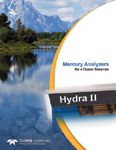
Voltage converter
EMCO's ultraminiature DC to HV DC converter is designed as a surface mount device that occupies <0.10 in.3 of space and has a profile of 0.128 in. above the host circuit board. According to the company, output voltages range from 100 V to 6 kV. EMCO High Voltage Corp., Sutter Creek, CA;

Fluorescence lifetime systems
Time-correlated single photon counting (TCSPC) fluorescence lifetime systems from Horiba Scientific are designed for sensitivity and speed. The DeltaPro system is a filter-based system that uses interchangeable pulsed laser-diode and LED light sources. The DeltaFlex system is a modular system that integrates excitation and emission monochromators, an array of sources, and detectors and is designed to measure luminescence lifetimes ranging over 11 orders of magnitude. Horiba Scientific, Edison NJ;
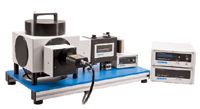
3D confocal Raman microscope
WITec's modular alpha300/500 Raman microscope is designed for analysis of the chemical characteristics of a sample three-dimensionally, underneath and at the surface. According to the company, the microscope provides high spectral quality and spatial resolution for minute sample structures. WITec, Knoxville, TN;
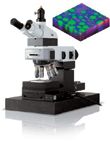
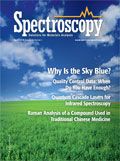
LIBS Illuminates the Hidden Health Risks of Indoor Welding and Soldering
April 23rd 2025A new dual-spectroscopy approach reveals real-time pollution threats in indoor workspaces. Chinese researchers have pioneered the use of laser-induced breakdown spectroscopy (LIBS) and aerosol mass spectrometry to uncover and monitor harmful heavy metal and dust emissions from soldering and welding in real-time. These complementary tools offer a fast, accurate means to evaluate air quality threats in industrial and indoor environments—where people spend most of their time.
NIR Spectroscopy Explored as Sustainable Approach to Detecting Bovine Mastitis
April 23rd 2025A new study published in Applied Food Research demonstrates that near-infrared spectroscopy (NIRS) can effectively detect subclinical bovine mastitis in milk, offering a fast, non-invasive method to guide targeted antibiotic treatment and support sustainable dairy practices.
Smarter Sensors, Cleaner Earth Using AI and IoT for Pollution Monitoring
April 22nd 2025A global research team has detailed how smart sensors, artificial intelligence (AI), machine learning, and Internet of Things (IoT) technologies are transforming the detection and management of environmental pollutants. Their comprehensive review highlights how spectroscopy and sensor networks are now key tools in real-time pollution tracking.